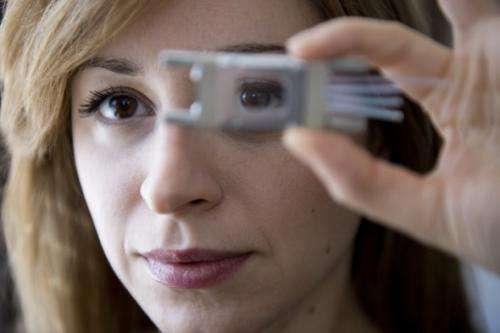Biological testing tool, ScanDrop, tests in fraction of time and cost of industry standard

Northeastern University professor of pharmaceutical sciences, Tania Konry, has developed a single instrument that can conduct a wide range of biological scans in a fraction of the time and cost of industry standard equipment. That's because it uses considerably less material and ultra-sensitive detection methods to do the same thing.
Currently, researchers face enormous time constraints and financial hurdles from having to run these analyses on a regular basis. Hundreds of dollars and 24 hours are what's required to scan biological materials for important biomarkers that signal diseases such as diabetes or cancer. And suppose you wanted to monitor live cancer cells. For that you'd have to use an entirely different method. It takes just as long but requires a whole other set of expensive top-end instrumentation. Want to look at bacteria instead? Be prepared to wait a few days for it to grow before you can get a meaningful result.
Konry's creation, ScanDrop, is a portable instrument no bigger than a shoebox that has the capacity to detect a variety of biological specimen. For that reason it will benefit a wide range of users beyond the medical community, including environmental monitoring and basic scientific research.
The instrument acts as a miniature science lab, of sorts. It contains a tiny chip, made of polymer or glass, that is connected to equally tiny tubes. An extremely small-volume liquid sample-whether it's water or a biological fluid such as serum-flows in one of those tubes, through the lab-on-a-chip device, and out the other side. While inside, the sample is exposed to a slug of microscopic beads functionalized to react with the lab test's search parameters. For example, one type of bead could be covered with antibodies that selectively bind to e. coli to test water quality. Other types could detect cancer biomarkers or bind to the tetanus virus to test for immunity.
"It can be any biological agent," Konry said. "We take the same approach."
The beads fluoresce when the specific marker or cell in question has been detected; from there, an analysis by ScanDrop can provide the concentration levels of that marker or cell.
Because the volumes being tested with ScanDrop are so small, the testing time dwindles to just minutes. This means you could get near-real time measures of a changing sample-be it bacteria levels in a flowing body of water or dynamic insulin levels in the bloodstream of a person with diabetes.
Konry noted that not only are other testing mechanisms prohibitively expensive, but they are also fairly useless in the field-particularly in remote areas-because the instruments are large and require long times for analysis. By comparison, ScanDrop's portability makes it much more functional and efficient in the field.
Her team recently joined forces with a group at the University of California at Berkeley, which developed software that can remotely control ScanDrop's activity from anywhere on the planet. This functionality could be particularly useful when the instrument is set up in the field to continuously monitor the environment. The achievement, Konry said, adds yet another level of efficiency to the system. The research was recently reported in the journal PLOS ONE.
Journal information: PLoS ONE
Provided by Northeastern University




















